Two verses of Hillaire Belloc’s satirical verse The Garden Party deftly satirize how class distinction is expressed. The scene would be an expansive lawn in view of a splendid English manor house, thrown open to the locals (by invitation) for an afternoon of dress-up and cucumber sandwiches.
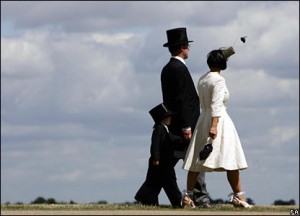 The Rich arrived in pairs
The Rich arrived in pairs
And also in Rolls Royces;
They talked of their affairs
In loud and strident voices.
The poor arrived in Fords,
Whose featured they resembled;
They laughed to see so many Lords
And Ladies all assembled.
Belloc chooses a garden party, a sophisticated entertainment of banter and light refreshments, an event affiliated with the ruling class, because it is they who own gardens large enough to host such throngs. The rich, secure in themselves and their entitlements because they are on home turf, sweep along in magnificent automobiles, and take up space with easy confidence. In their own environment and in the alpha position, the wealthy express their superiority with expensive cars and casual self-centeredness. The poor, intimidated by the grand event and unused to the display, occupy the space left over. They are less at home and have less to say about themselves. The poor are playing away, are not confident of the rules of the game, and are understandably on the defensive.
Inanimate objects, such as cars, here rendered more  metaphorically powerful by their manufacturer’s brand, are enlisted to accentuate the distinction between the groups of participants. The ruling class conveyances express through their grandeur and expense the pomp and splendor of their owners’ position. These are immaculate, low occupancy vehicles with staff. The charabancs of the poor are careworn and hangdog. It is probable that they are communally rather than personally owned, and their occupants, who arrive in herds like cattle, are dismissed as grossly designed and maintained and inhabiting an inferior, machine-like world.
metaphorically powerful by their manufacturer’s brand, are enlisted to accentuate the distinction between the groups of participants. The ruling class conveyances express through their grandeur and expense the pomp and splendor of their owners’ position. These are immaculate, low occupancy vehicles with staff. The charabancs of the poor are careworn and hangdog. It is probable that they are communally rather than personally owned, and their occupants, who arrive in herds like cattle, are dismissed as grossly designed and maintained and inhabiting an inferior, machine-like world.
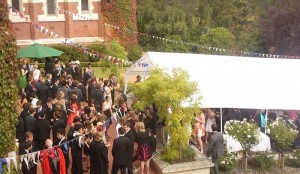 Belloc’s incisive summation of the injustices of the class system focuses his venom on an imbalance for which he reserved particular antipathy. Although it was written between the two World Wars, the poem is a comic reminder that still today no social event is a level playing field; someone owns it, someone sets the rules, and someone benefits from it. A garden party that takes place in the grounds of an imposing manor house is owned by the hosts, it is an expression of their values, they set the rules, and as a result it is a reminder of their social superiority. If this were not so, if the ruling class were eager to cross the lines of social division, there would be many more open invitation Beer ‘n Bingo Nights at the nation’s grander homes.
Belloc’s incisive summation of the injustices of the class system focuses his venom on an imbalance for which he reserved particular antipathy. Although it was written between the two World Wars, the poem is a comic reminder that still today no social event is a level playing field; someone owns it, someone sets the rules, and someone benefits from it. A garden party that takes place in the grounds of an imposing manor house is owned by the hosts, it is an expression of their values, they set the rules, and as a result it is a reminder of their social superiority. If this were not so, if the ruling class were eager to cross the lines of social division, there would be many more open invitation Beer ‘n Bingo Nights at the nation’s grander homes.
An opera house is a form of garden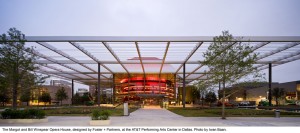 party. The grand buildings with which grand opera is associated are psychologically owned by the wealthy because their names are often attached to them as testaments to their generosity and social position. For example, as a result of their $42M gift, the new 2009 opera house in Dallas bears the name The Margot & Bill Winspear Opera House. In Denver, The Caulkins family donated $7M towards the Ellie Caulkins Opera House, which opened in 2005.
party. The grand buildings with which grand opera is associated are psychologically owned by the wealthy because their names are often attached to them as testaments to their generosity and social position. For example, as a result of their $42M gift, the new 2009 opera house in Dallas bears the name The Margot & Bill Winspear Opera House. In Denver, The Caulkins family donated $7M towards the Ellie Caulkins Opera House, which opened in 2005.
Celebrating a donor, rather than someone especially artistic such as a gifted conductor or singer, the building betrays a symbiotic relationship with its financial patrons that is harmfully aggrandizing. Religious buildings are about moral saints, civic buildings are about politicians, arts buildings are not about money, and should be free from indebtedness to their wealthy donors. Certainly arts buildings are sustained by money, but their agenda is art.
The stamp of ownership impregnates the building and informs its design decisions. Just as St. Francis’ parish church can be assumed to have a friendly animal policy, an arts facility bearing the name of a wealthy donor can be assumed to have his/her interests at heart.
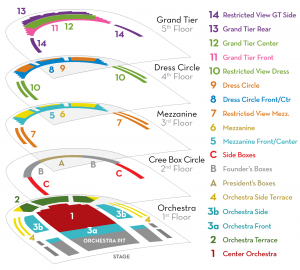 Even in houses that are not specifically dedicated to the financially most generous, 19th century European principles of court seating hold sway; the higher in the pecking order the better the seat. Here, at the new Dallas Opera house, the wealthy are granted the prime viewing position, just as in the days when theaters maintained a Royal or Presidential Box, and the class system filters down through the rest of the seating plan. As a result The Winspear Opera House has eighteen different seating sections, although the President’s and the Founder’s Boxes are reserved for extra special dignitaries and guests, effectively reducing the general selection to sixteen. Weighing from among so many choices is bewildering and intimidating, perhaps deliberately so. The additional unnecessary implication that the prime slots are reserved for the Truly Magnificent, and that only the somewhat blemished fruit is left over, reminds all opera goers of their deference and debt of gratitude to the people in the posh seats. This is part of the building’s design agenda.
Even in houses that are not specifically dedicated to the financially most generous, 19th century European principles of court seating hold sway; the higher in the pecking order the better the seat. Here, at the new Dallas Opera house, the wealthy are granted the prime viewing position, just as in the days when theaters maintained a Royal or Presidential Box, and the class system filters down through the rest of the seating plan. As a result The Winspear Opera House has eighteen different seating sections, although the President’s and the Founder’s Boxes are reserved for extra special dignitaries and guests, effectively reducing the general selection to sixteen. Weighing from among so many choices is bewildering and intimidating, perhaps deliberately so. The additional unnecessary implication that the prime slots are reserved for the Truly Magnificent, and that only the somewhat blemished fruit is left over, reminds all opera goers of their deference and debt of gratitude to the people in the posh seats. This is part of the building’s design agenda.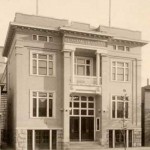
At the other end of the spectrum, this Socialist Opera House in Virginia, MN, was built by Finnish immigrants to draw audiences to attend musical and theatrical productions, and then to hear political speeches poems and songs to expand their knowledge of socialism. In 1916 it also became the miners’ headquarters for the local strike committee and for the Industrial Workers of the World, linking opera for many years with the world of unions and workers’ rights.
That the establishment arts remain an accepted expression of class in America through their architecture ought to be a cause for concern. Art is an expression that benefits society as a whole, it is a moral force that penetrates and teaches, showing us the good; limiting access to it deprives society of a moral truth. Architecture that trades in class distinctions contradicts art’s equalizing, humanizing power. A night at the opera is not necessarily a night at the Opera House; other buildings and spaces, that are not consciously ‘owned’ by the ruling class, with alternative seating arrangements and pricing plans based on less inequitable models, can attract wider audiences because they are in tune with the liberating and humanizing power of art. The video below is a student diary of the Royal Welsh College of Music and Drama’s production of Carmen in the Orkney Cattle Market at the St. Magnus Festival 2012.
If left to the private sector, the arts are skewed towards whoever owns the means and place of expression. For the moral power of art to influence society it must grow beyond elaborate garden parties hosted by the privileged whose interest is to retain the status quo. Art should not be interested in business as usual. Art seeks truth, not stasis.
